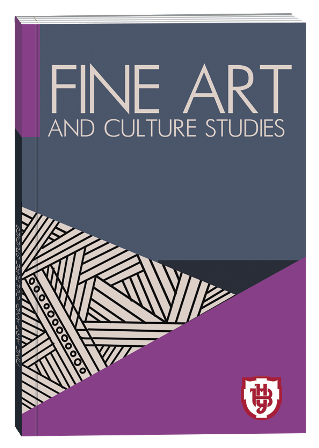THEMATIC COMPOSITIONS IN MONUMENTAL PAINTING: THE CONNECTION BETWEEN INTERIOR AND EXTERIOR
DOI:
https://doi.org/10.32782/facs-2025-4-35Keywords:
monumental painting, interior, exterior, mosaic, fresco, historical aspectAbstract
In this article, we have examined monumental painting as one of the oldest and most expressive forms of visual art, which plays an important role in shaping the artistic space. It blends harmoniously with architecture and has not only an aesthetic but also a meaningful function, conveying certain ideas, symbols and cultural codes. Unlike easel painting, monumental works do not exist separately – they are integrated into the interior or exterior of buildings and public spaces, enriching their atmosphere and identity. From the cave paintings of primitive people to modern frescoes, this art form has always been a means of communication, telling about the events, beliefs and worldviews of different eras.The purpose of this article is to study the role of thematic compositions in monumental painting and their relationship with the interior and exterior. Methodology. The study is based on a comprehensive analysis of theoretical and art history sources, which involves the use of a systematic approach to processing, comparing and synthesising the material.The historical and cultural method made it possible to consider the emergence and development of monumental art as a holistic, multifaceted phenomenon. The works of monumental art were analysed using the formal and stylistic method. Scientific novelty. The features of the use of thematic composition in monumental painting from ancient times to the present day were studied. The features of working on the composition for a monumental work were also examined.The connection between monumental art and architecture is analysed. Conclusions. Monumental painting shapes space and preserves cultural traditions. Successful integration of a monumental work into architectural space can create aesthetic and functional significance. Monumental works are an integral part of cultural heritage, reflecting social values and artistic traditions. The technical aspects of creating monumental compositions cover a wide range of traditional and innovative approaches, allowing artists to create durable and expressive works of art. The connection between monumental works and interiors and exteriors has been revealed, taking into account the scale of buildings, lighting features, and the historical and cultural context.
References
Батенко А. О. Мурал-арт як складова культурного простору міста. Українські культурологічні студії. 2020. № 2(7). С. 65–68.
Голуб О. Є. Мурал. Енциклопедія Сучасної України. Київ: Інститут енциклопедичних досліджень НАН України, 2023. URL: https://esu.com.ua/article-70272 (дата звернення 20.08.2025).
Декоративно-ужиткове мистецтво: словник у 2-х т. / під ред. Я. П. Запаска. Львів: Афіша, 2000. Т. 2. 400 с.
Михайленко В. Є., Яковлєв М. І. Основи композиції (геометричні аспекти художнього формотворення). Київ: Каравела, 2004. 304 с.
Прищенко С. В. Кольорознавство: навч. посібник. Київ: ДАКККіМ, 2009. 358 с.
Скляренко Г. Я. Монументальний живопис. Енциклопедія Сучасної України. Київ: Інститут енциклопедичних досліджень НАН України, 2019. URL: https://esu.com.ua/article-69201 (дата звернення 20.08.2025).
Скляренко Г. Український стінопис 1960–1980-х років: еволюція художньої мови. Сучасне мистецтво. 2022. № 18. С. 175–188.
Український живопис ХХ – ХХІ ст.: альбом / авт. проекту А. М. Мельник. Київ: Артанія Нова, 2006. 304 с.
Український модернізм 1910-1930: альбом / авт. проекту А. М. Мельник. Хмельницький: Галерея, 2006. 288 с.
Урсу Н. О., Гуцул І. А. Теоретичні основи композиції. Кам’янець-Подільский: Аксіома., 2018. 166 с.








